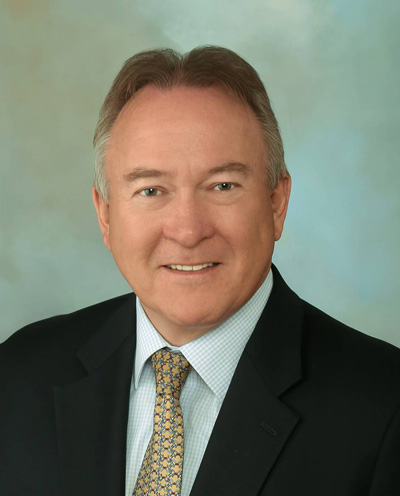Summit Therapeutics plc
(‘Summit’, the ‘Company’ or the ‘Group’)
Summit Therapeutics Reports Financial Results and Operational Progress for the Third Quarter and Nine Months Ended 31 October 2019
Oxford, UK, and Cambridge, MA, US, 17 December 2019 – Summit Therapeutics plc (NASDAQ: SMMT, AIM: SUMM) today reports its financial results and provides an update on its operational progress for the third quarter and nine months ended 31 October 2019.
“Our enthusiasm for ridinilazole continues to grow. Phase 2 clinical data presented this past quarter showed ridinilazole had significant improvements in patient quality of life measures and preservation of the gut microbiome compared to the current standard of care. These findings reinforce our belief that ridinilazole could provide better overall clinical, physical and mental outcomes for patients with C. difficile infection,” said Glyn Edwards, Chief Executive Officer of Summit. “We were also pleased to announce recently the proposed $50 million investment into Summit that will primarily be used to support the ongoing Phase 3 clinical programme and commercial preparatory activities for ridinilazole. We look forward to continuing to advance ridinilazole through our landmark Phase 3 clinical trials that remain on track to report results in the second half of 2021.”
Ridinilazole for C. difficile Infection (‘CDI’)
- Ri-CoDIFy Phase 3 landmark clinical trials aim to support registration of the precision antibiotic ridinilazole in the US and other territories, and its adoption as a first-line treatment for CDI by:
- showing superiority over the current standard of care, vancomycin, using a composite endpoint measuring sustained clinical response;
- generating health economic data to help support ridinilazole’s commercial launch, if approved; and
- undertaking deep microbiome analyses to evaluate ridinilazole’s preservation of the gut microbiome.
- The Phase 3 clinical programme remains on track for expected reporting of top-line data in the second half of 2021. The trials had enrolled a total of 128 patients as at the end of November 2019 with over two thirds of the 300 planned clinical trials sites having been opened.
- Reported new Phase 2 clinical trial data that showed ridinilazole improved patients’ quality of life compared to vancomycin, including statistically significant improvements in measurements of physical and mental health. Additional data from the Phase 2 clinical trial provided mechanistic insights into how ridinilazole preserved the diversity of the gut microbiome in patients with CDI to maintain the balance of the metabolome of active chemicals made or modified by gut bacteria that help prevent C. difficile recurrence. These new results were reported at the ID Week Conference held in Washington DC in October 2019.
- Commercial and medical affairs hires have been made in the United States to support work to prepare for a potential launch and to secure future market access for ridinilazole, if approved.
Discuva Platform
Enterobacteriaceae
- DDS-04 compound series is a new class of antibiotics in lead optimisation that acts via the novel bacterial target LolCDE with the potential to treat infections caused by the Gram-negative bacteria, Enterobacteriaceae.
- In vivo proof of concept has been demonstrated with a DDS-04 series compound in pneumonia, sepsis and urinary tract infection (‘UTI’). Data from all three disease models were presented at the ASM / ESCMID Conference held in September.
Gonorrhoea
- The focus of the gonorrhoea programme has shifted from SMT-571 to related compounds as part of ongoing preclinical studies as the Company seeks to bring an optimal clinical candidate forward. The lead optimisation work is being supported by an award of up to $4.5 million from CARB-X.
Corporate Highlights
- A proposed fundraising of approximately $50 million through a subscription and placing of new ordinary shares and warrants to existing investors (the ‘Fundraising’) was announced on 6 December 2019. The Fundraising requires approval by shareholders at a general meeting of the Company to be held on 23 December 2019. If the Fundraising is completed, the net proceeds, together with the Company’s existing cash resources and funding agreements, are expected to extend its cash runway to 31 January 2021.
- Conditional on the Fundraising being completed, the board of directors will be restructured to support preparations for the potential commercial launch of ridinilazole for the treatment of CDI. Specifically, conditional on the Fundraising being completed, Mr Robert W. Duggan, Mr Manmeet Soni, Dr Elaine Stracker and Dr Ventzislav Stefanov were appointed as non-executive directors, and Dr Frank Armstrong, Mr Leopoldo Zambeletti and Mr David Wurzer are stepping down from the board of directors. Mr Glyn Edwards will take the role of Chairman in addition to his existing role as Chief Executive Officer.
- As a condition of the Fundraising, it is proposed that the admission of the Company’s ordinary shares to trading on AIM will be cancelled (‘AIM Delisting’) with effect from 7.00 am on 24 February 2020. The Company’s American Depositary Shares (‘ADSs’) will remain listed on the Nasdaq Stock Market where one ADS is represented by five ordinary shares. The proposed AIM Delisting reflects the increasing focus of Summit’s business operations on the United States, and specifically the Company’s plans to commercialise ridinilazole in the United States with its own specialised sales force, if approved.
Financial Highlights
- Cash and cash equivalents at 31 October 2019 of £13.6 million compared to £26.9 million at 31 January 2019. Cash position does not include the proposed Fundraising of approximately $50 million announced on 6 December 2019 (see Corporate Highlights above for further details).
- Loss for the three months ended 31 October 2019 of £7.0 million compared to a loss of £8.1 million for the three months ended 31 October 2018.
- The Company today announces that it has changed its accounting reference date from 31 January to 31 December with immediate effect.
This announcement contains inside information for the purposes of Article 7 of EU Regulation 596/2014 (MAR).
About Summit Therapeutics
Summit Therapeutics is a leader in antibiotic innovation. Our new mechanism antibiotics are designed to become the new standards of care for the benefit of patients and create value for payors and healthcare providers. We are currently developing new mechanism antibiotics to treat infections caused by C. difficile, N. gonorrhoeae and Enterobacteriaceae and are using our proprietary Discuva Platform to expand our pipeline. For more information, visit www.summitplc.com and follow us on Twitter @summitplc.
For more information:
| Summit Glyn Edwards / Richard Pye (UK office) Michelle Avery (US office) |
Tel: +44 (0)1235 443 951 |
| Cairn Financial Advisers LLP (Nominated Adviser) Liam Murray / Tony Rawlinson / Ludovico Lazzaretti |
Tel: +44 (0)20 7213 0880 |
| N+1 Singer (Joint Broker) Aubrey Powell / George Tzimas, Corporate Finance Tom Salvesen, Corporate Broking |
Tel: +44 (0)20 7496 3000 |
| Bryan Garnier & Co Limited (Joint Broker)
Phil Walker / Dominic Wilson |
Tel: +44 (0)20 7332 2500 |
| MSL Group (US) Erin Anthoine |
Tel: +1 781 684 6552 summit@mslgroup.com |
| Consilium Strategic Communications (UK) Mary-Jane Elliott / Sue Stuart / Sukaina Virji / Lindsey Neville |
Tel: +44 (0)20 3709 5700 summit@consilium-comms.com |
Forward Looking Statements
Any statements in this press release about the Company’s future expectations, plans and prospects, including but not limited to, whether or not the Company will consummate the Fundraising, the restructuring of the board of directors, the AIM Delisting, the trading markets for the Company’s ordinary shares and ADSs, statements about the potential benefits and future operation of the BARDA or CARB-X contract, including any potential future payments thereunder, the clinical and preclinical development of the Company’s product candidates, the therapeutic potential of the Company’s product candidates, the potential of the Discuva Platform, the potential commercialisation of the Company’s product candidates, the sufficiency of the Company’s cash resources, the timing of initiation, completion and availability of data from clinical trials, the potential submission of applications for marketing approvals and other statements containing the words “anticipate,” “believe,” “continue,” “could,” “estimate,” “expect,” “intend,” “may,” “plan,” “potential,” “predict,” “project,” “should,” “target,” “would,” and similar expressions, constitute forward-looking statements within the meaning of The Private Securities Litigation Reform Act of 1995. Actual results may differ materially from those indicated by such forward-looking statements as a result of various important factors, including: the risk that the Company’s shareholders do not approve the Fundraising and AIM Delisting, the risk that other closing conditions to the Fundraising are not satisfied, the ability of BARDA or CARB-X to terminate the Company’s contract for convenience at any time, the uncertainties inherent in the initiation of future clinical trials, availability and timing of data from ongoing and future preclinical studies and clinical trials and the results of such preclinical studies and clinical trials, whether preliminary results from a clinical trial will be predictive of the final results of that trial or whether results of early clinical trials or preclinical studies will be indicative of the results of later clinical trials, expectations for regulatory approvals, laws and regulations affecting government contracts, availability of funding sufficient for the Company’s foreseeable and unforeseeable operating expenses and capital expenditure requirements and other factors discussed in the “Risk Factors” section of filings that the Company makes with the Securities and Exchange Commission, including the Company’s Annual Report on Form 20-F for the fiscal year ended 31 January 2019. Accordingly, readers should not place undue reliance on forward-looking statements or information. In addition, any forward-looking statements included in this press release represent the Company’s views only as of the date of this release and should not be relied upon as representing the Company’s views as of any subsequent date. The Company specifically disclaims any obligation to update any forward-looking statements included in this press release.
FINANCIAL REVIEW
Other Operating Income
Other operating income was £3.8 million for the three months ended 31 October 2019, as compared to £2.8 million for the three months ended 31 October 2018. Other operating income was £12.8 million for the nine months ended 31 October 2019, as compared to £9.0 million for the nine months ended 31 October 2018. These increases resulted primarily from the recognition of operating income from Summit’s funding contract with BARDA for the development of ridinilazole, which was £3.6 million for the three months ended 31 October 2019 as compared to £2.2 million for the three months ended 31 October 2018 and £11.7 million for the nine months ended 31 October 2019 as compared to £7.5 million for the nine months ended 31 October 2018. As of 31 October 2019, an aggregate of £26.6 million ($34.3 million) of the total committed BARDA funding of $53.6 million has been recognised.
The Group also recognised operating income related to the CARB-X award supporting the development of the Company’s gonorrhoea programme of £0.2 million during the three months ended 31 October 2019 as compared to £0.1 million for the three months ended 31 October 2018 and £0.6 million during the nine months ended 31 October 2019 as compared to £0.3 million for the nine months ended 31 October 2018.
Revenue
Revenue was £0.1 million for the three months ended 31 October 2019 compared to £0.7 million for the three months ended 31 October 2018. Revenue was £0.5 million for the nine months ended 31 October 2019 compared to £42.5 million for the nine months ended 31 October 2018.
Revenue of £0.1 million recognised during the three months ended 31 October 2019 and £0.4 million recognised during the nine months ended 31 October 2019 related to the receipt of a $2.5 million (£1.9 million) upfront payment in respect of the licence and commercialisation agreement signed with Eurofarma Laboratórios SA in December 2017 for the exclusive right to commercialise ridinilazole in specified Latin American and Caribbean countries.
The decreases in revenue recognised are principally due to the reduction in revenue related to the Sarepta licence and collaboration agreement for the treatment of Duchenne muscular dystrophy (‘DMD’). Revenue relating to the cost-share arrangement under the Sarepta agreement recognised during the three months ended 31 October 2019 amounted to £nil and during the nine months ended 31 October 2019 amounted to £0.1 million, as compared to total revenues relating to the upfront payment, development milestone payment and cost-share arrangement recognised during the three months ended 31 October 2018 of £0.6 million and during the nine months ended 31 October 2018 of £41.9 million. The agreement with Sarepta was terminated, effective August 2019, with no material ongoing obligations for either party.
Operating Expenses
Research and Development Expenses
Research and development expenses decreased by £1.0 million to £7.2 million for the three months ended 31 October 2019 from £8.2 million for the three months ended 31 October 2018. Research and development expenses decreased by £4.9 million to £24.7 million for the nine months ended 31 October 2019 from £29.6 million for the nine months ended 31 October 2018. These decreases primarily reflect decreases in clinical programme costs pertaining to the historical DMD programme.
Expenses related to the CDI programme increased by £4.2 million to £16.9 million for the nine months ended 31 October 2019 from £12.7 million for the nine months ended 31 October 2018. This increase primarily related to clinical operations and supply manufacturing activities related to the ongoing Ri-CoDIFy Phase 3 clinical trials of ridinilazole that commenced in February 2019.
Investment in the Group’s preclinical antibiotic pipeline was £2.0 million for the nine months ended 31 October 2019 compared to £1.1 million for the nine months ended 31 October 2018. This increase primarily related to preclinical development activities for DDS-04 series for the treatment of Enterobacteriaceae infections and the gonorrhoea programme.
Expenses related to the DMD programme decreased to £0.2 million for the nine months ended 31 October 2019 from £8.6 million for the nine months ended 31 October 2018. The Group does not expect to incur further significant costs for this programme.
Other research and development expenses decreased by £1.7 million to £5.6 million during the nine months ended 31 October 2019 as compared to £7.3 million during the nine months ended 31 October 2018, which was driven by a decrease in staffing and facility costs.
General and Administration Expenses
General and administration expenses decreased by £0.3 million to £4.4 million for the three months ended 31 October 2019 from £4.7 million for the three months ended 31 October 2018. General and administration expenses decreased by £2.1 million to £7.2 million for the nine months ended 31 October 2019 from £9.3 million for the nine months ended 31 October 2018. These decreases were driven primarily by the non-cash charge for the acceleration of share-based payment expense resulting from the surrender of share options offset by a net positive movement in exchange rate variances accounted for in the comparative periods.
Finance Costs
Finance costs recognised during the three and nine months ended 31 October 2019 relate to lease liability interest payable and the unwinding of the discount associated with provisions. Finance costs were £0.1 million for the three months ended 31 October 2019 compared to £0.1 million for the three months ended 31 October 2018. Finance costs were £0.2 million for the nine months ended 31 October 2019 compared to £0.4 million for the nine months ended 31 October 2018. This decrease relates to the cessation of the unwinding of the discount following the remeasurement in June 2018 of the financial liabilities on funding arrangements for the historical DMD programme.
Taxation
The income tax credit for the three months ended 31 October 2019 was £0.7 million as compared to £1.3 million for the three months ended 31 October 2018. The income tax credit for the nine months ended 31 October 2019 was £2.6 million as compared to £1.7 million for the nine months ended 31 October 2018. The Group’s current net tax credit for the periods reflects the accrued UK research and development tax credit based on management’s estimate of the qualifying expenditure relating to research and development activities carried out by the Group, the taxes relating to the US operations and the release of deferred tax liabilities associated with the amortisation of intangible assets.
Losses
Loss before income tax was £7.8 million for the three months ended 31 October 2019 compared to a loss before income tax of £9.4 million for the three months ended 31 October 2018. Loss before income tax was £18.8 million for the nine months ended 31 October 2019 compared to a profit before income tax of £10.9 million for the nine months ended 31 October 2018.
Net loss for the three months ended 31 October 2019 was £7.0 million with a basic loss per share of 4 pence compared to a net loss of £8.1 million for the three months ended 31 October 2018 with a basic loss per share of 10 pence. Net loss for the nine months ended 31 October 2019 was £16.2 million with a basic loss per share of 10 pence compared to a net profit of £12.7 million for the nine months ended 31 October 2018 with a basic earnings per share of 16 pence.
The profits recorded during the nine months ended 31 October 2018 were due to the recognition of all remaining deferred revenue related to the Sarepta agreement.
Cash Flows
The Group had a net cash outflow of £13.7 million for the nine months ended 31 October 2019 as compared to a net cash outflow of £8.2 million for the nine months ended 31 October 2018.
Operating Activities
For the nine months ended 31 October 2019, net cash used in operating activities was £13.2 million compared to £22.1 million for the nine months ended 31 October 2018. This positive movement of £8.9 million was driven by an increase in cash received from licensing agreements and funding arrangements of £0.8 million, an increase in taxation cash inflows of £5.4 million due to the timing of receipt of the Group’s research and development tax credits receivable on qualifying expenditure in respect of financial years ended 31 January 2017, 2018 and 2019, and a decrease in operating costs of £10.2 million as a result of the Group’s decision to discontinue development of ezutromid.
Investing Activities
Net cash used in investing activities was £0.2 million for the nine months ended 31 October 2019 as compared to £0.1 million for the nine months ended 31 October 2018. Net cash used in investing activities for the nine months ended 31 October 2019 includes amounts paid to acquire property, plant and equipment and intangible assets, offset by bank interest received on cash deposits.
Financing Activities
Net cash used in financing activities for the nine months ended 31 October 2019 of £0.3 million primarily relates to lease liability repayments. Net cash generated from financing activities for the nine months ended 31 October 2018 of £14.0 million was primarily driven by £14.1 million of proceeds, net of transaction costs, received following the Group’s equity placing in March 2018.
Financial Position and Cash Runway Guidance
As at 31 October 2019, total cash and cash equivalents held were £13.6 million (31 January 2019: £26.9 million).
On 6 December 2019, the Group announced a proposed Fundraising of approximately $50 million which is subject to certain shareholder approvals being obtained at a general meeting to be held on 23 December 2019. Please see Note 1 for further details should the Group not receive shareholder approval. If shareholder approval is obtained, the net proceeds of the Fundraising, together with the Group’s existing cash resources and funding agreements, are expected to extend its cash runway to 31 January 2021.
| Glyn Edwards | ||
| Chief Executive Officer | ||
| 17 December 2019 | ||
FINANCIAL STATEMENTS
Condensed Consolidated Statement of Comprehensive Income (unaudited)
For the three months ended 31 October 2019
| Three months ended 31 October 2019 |
Three months ended 31 October 2019 |
Three months ended 31 October 2018 |
|||||
| (Adjusted*) | |||||||
| Note | $000s | £000s | £000s | ||||
| Revenue | 160 | 124 | 675 | ||||
| Other operating income | 4,881 | 3,772 | 2,825 | ||||
| Operating expenses | |||||||
| Research and development | (9,347 | ) | (7,224 | ) | (8,195 | ) | |
| General and administration | (5,650 | ) | (4,367 | ) | (4,654 | ) | |
| Total operating expenses | (14,997 | ) | (11,591 | ) | (12,849 | ) | |
| Operating (loss) | (9,956 | ) | (7,695 | ) | (9,349 | ) | |
| Finance income | 1 | 1 | — | ||||
| Finance costs | (82 | ) | (63 | ) | (60 | ) | |
| (Loss) before income tax | (10,037 | ) | (7,757 | ) | (9,409 | ) | |
| Income tax | 941 | 727 | 1,275 | ||||
| (Loss) for the period | (9,096 | ) | (7,030 | ) | (8,134 | ) | |
| Other comprehensive (loss) / income | |||||||
| Items that may be reclassified subsequently to profit or loss | |||||||
| Exchange differences on translating foreign operations | (21 | ) | (16 | ) | 6 | ||
| Total comprehensive (loss) for the period | (9,117 | ) | (7,046 | ) | (8,128 | ) | |
| Basic and diluted (loss) per ordinary share from operations | 2 | (5) cents | (4) pence | (10) pence | |||
* See Note 1 – ‘Basis of Accounting – Adoption of IFRS 16 ‘Leases’’
Condensed Consolidated Statement of Comprehensive Income (unaudited)
For the nine months ended 31 October 2019
| Nine months ended 31 October 2019 |
Nine months ended 31 October 2019 |
Nine months ended 31 October 2018 |
|||||
| (Adjusted*) | |||||||
| Note | $000s | £000s | £000s | ||||
| Revenue | 646 | 499 | 42,507 | ||||
| Other operating income | 16,533 | 12,778 | 8,979 | ||||
| Operating expenses | |||||||
| Research and development | (31,976 | ) | (24,713 | ) | (29,640 | ) | |
| General and administration | (9,350 | ) | (7,226 | ) | (9,309 | ) | |
| Impairment of goodwill and intangible assets | — | — | (3,986 | ) | |||
| Total operating expenses | (41,326 | ) | (31,939 | ) | (42,935 | ) | |
| Operating (loss) / profit | (24,147 | ) | (18,662 | ) | 8,551 | ||
| Finance income | 4 | 3 | 2,786 | ||||
| Finance costs | (241 | ) | (186 | ) | (410 | ) | |
| (Loss) / profit before income tax | (24,384 | ) | (18,845 | ) | 10,927 | ||
| Income tax | 3,404 | 2,631 | 1,730 | ||||
| (Loss) / profit for the period | (20,980 | ) | (16,214 | ) | 12,657 | ||
| Other comprehensive income | |||||||
| Items that may be reclassified subsequently to profit or loss | |||||||
| Exchange differences on translating foreign operations | 6 | 5 | 25 | ||||
| Total comprehensive (loss) / profit for the period | (20,974 | ) | (16,209 | ) | 12,682 | ||
| Basic and diluted (loss) / earnings per ordinary share from operations | 2 | (13) cents | (10) pence | 16 pence | |||
* See Note 1 – ‘Basis of Accounting – Adoption of IFRS 16 ‘Leases’’
Condensed Consolidated Statement of Financial Position (unaudited)
As at 31 October 2019
| 31 October 2019 | 31 October 2019 | 31 January 2019 | |||||
| (Adjusted*) | |||||||
| $000s | £000s | £000s | |||||
| ASSETS | |||||||
| Non-current assets | |||||||
| Goodwill | 2,347 | 1,814 | 1,814 | ||||
| Intangible assets | 13,049 | 10,085 | 10,604 | ||||
| Property, plant and equipment | 1,594 | 1,232 | 1,540 | ||||
| 16,990 | 13,131 | 13,958 | |||||
| Current assets | |||||||
| Trade and other receivables | 11,583 | 8,953 | 13,491 | ||||
| Current tax receivable | 4,740 | 3,663 | 6,328 | ||||
| Cash and cash equivalents | 17,600 | 13,602 | 26,858 | ||||
| 33,923 | 26,218 | 46,677 | |||||
| Total assets | 50,913 | 39,349 | 60,635 | ||||
| LIABILITIES | |||||||
| Non-current liabilities | |||||||
| Lease liabilities | (523 | ) | (404 | ) | (647 | ) | |
| Deferred revenue | (591 | ) | (457 | ) | (831 | ) | |
| Provisions for other liabilities and charges | (2,603 | ) | (2,012 | ) | (1,851 | ) | |
| Deferred tax liability | (2,046 | ) | (1,581 | ) | (1,675 | ) | |
| (5,763 | ) | (4,454 | ) | (5,004 | ) | ||
| Current liabilities | |||||||
| Trade and other payables | (9,341 | ) | (7,220 | ) | (8,733 | ) | |
| Lease liabilities | (463 | ) | (358 | ) | (358 | ) | |
| Deferred revenue | (485 | ) | (375 | ) | (3,374 | ) | |
| Contingent consideration | (104 | ) | (80 | ) | (629 | ) | |
| (10,393 | ) | (8,033 | ) | (13,094 | ) | ||
| Total liabilities | (16,156 | ) | (12,487 | ) | (18,098 | ) | |
| Net assets | 34,757 | 26,862 | 42,537 | ||||
| EQUITY | |||||||
| Share capital | 2,077 | 1,605 | 1,604 | ||||
| Share premium account | 120,082 | 92,806 | 92,806 | ||||
| Share-based payment reserve | 1,560 | 1,206 | 1,148 | ||||
| Merger reserve | 3,917 | 3,027 | 3,027 | ||||
| Special reserve | 25,869 | 19,993 | 19,993 | ||||
| Currency translation reserve | 79 | 61 | 56 | ||||
| Accumulated losses reserve | (118,827 | ) | (91,836 | ) | (76,097 | ) | |
| Total equity | 34,757 | 26,862 | 42,537 | ||||
* See Note 1 – ‘Basis of Accounting – Adoption of IFRS 16 ‘Leases’’
Condensed Consolidated Statement of Cash Flows (unaudited)
For the nine months ended 31 October 2019
| Nine months ended 31 October 2019 |
Nine months ended 31 October 2019 |
Nine months ended 31 October 2018 |
||||
| (Adjusted*) | ||||||
| $000s | £000s | £000s | ||||
| Cash flows from operating activities | ||||||
| (Loss) / profit before income tax | (24,384 | ) | (18,845 | ) | 10,927 | |
| (24,384 | ) | (18,845 | ) | 10,927 | ||
| Adjusted for: | ||||||
| Gain on re-measurement of financial liabilities on funding arrangements | — | — | (539 | ) | ||
| Loss on recognition of contingent consideration payable | — | — | 860 | |||
| Finance income | (4 | ) | (3 | ) | (2,786 | ) |
| Finance costs | 241 | 186 | 410 | |||
| Foreign exchange gain | (133 | ) | (103 | ) | (1,056 | ) |
| Depreciation | 554 | 428 | 483 | |||
| Amortisation of intangible fixed assets | 805 | 622 | 622 | |||
| Loss on disposal of assets | 13 | 10 | 24 | |||
| Research and development expenditure credit | — | — | (156 | ) | ||
| Impairment of goodwill and intangible assets | — | — | 3,986 | |||
| Share-based payment | 690 | 533 | 4,263 | |||
| Adjusted (loss) / profit from operations before changes in working capital | (22,218 | ) | (17,172 | ) | 17,038 | |
| Decrease / (increase) in prepayments and other receivables | 5,417 | 4,186 | (1,654 | ) | ||
| Decrease in deferred revenue | (4,365 | ) | (3,374 | ) | (33,973 | ) |
| Decrease in trade and other payables | (2,323 | ) | (1,796 | ) | (3,719 | ) |
| Cash used in operations | (23,489 | ) | (18,156 | ) | (22,308 | ) |
| Contingent consideration paid | (710 | ) | (549 | ) | — | |
| Taxation received | 6,902 | 5,334 | 172 | |||
| RDEC credit received | 211 | 163 | — | |||
| Net cash used in operating activities | (17,086 | ) | (13,208 | ) | (22,136 | ) |
| Investing activities | ||||||
| Purchase of property, plant and equipment | (167 | ) | (129 | ) | (56 | ) |
| Purchase of intangible assets | (133 | ) | (103 | ) | (5 | ) |
| Interest received | 4 | 3 | 3 | |||
| Net cash used in investing activities | (296 | ) | (229 | ) | (58 | ) |
| Financing activities | ||||||
| Proceeds from issue of share capital | — | — | 15,000 | |||
| Transaction costs on share capital issued | — | — | (858 | ) | ||
| Proceeds from exercise of share options | 1 | 1 | 102 | |||
| Repayment of lease liabilities | (346 | ) | (268 | ) | (240 | ) |
| Net cash (used in) / generated from financing activities | (345 | ) | (267 | ) | 14,004 | |
| Decrease in cash and cash equivalents | (17,727 | ) | (13,704 | ) | (8,190 | ) |
| Effect of exchange rates in cash and cash equivalents | 575 | 448 | 1,132 | |||
| Cash and cash equivalents at beginning of the period | 34,752 | 26,858 | 20,102 | |||
| Cash and cash equivalents at end of the period | 17,600 | 13,602 | 13,044 | |||
* See Note 1 – ‘Basis of Accounting – Adoption of IFRS 16 ‘Leases’’
Condensed Consolidated Statement of Changes in Equity (unaudited)
Nine months ended 31 October 2019
| Group | Share capital £000s |
Share premium account £000s |
Share-based payment reserve £000s |
Merger reserve £000s |
Special reserve £000s |
Currency translation reserve £000s |
Accumulated losses reserve £000s |
Total £000s |
||||||||
| At 31 January 2019 (as previously reported) | 1,604 | 92,806 | 1,148 | 3,027 | 19,993 | 56 | (76,092 | ) | 42,542 | |||||||
| Change in accounting policy (full retrospective application IFRS 16) | — | — | — | — | — | — | (5 | ) | (5 | ) | ||||||
| At 31 January 2019 (Adjusted*) | 1,604 | 92,806 | 1,148 | 3,027 | 19,993 | 56 | (76,097 | ) | 42,537 | |||||||
| Loss for the period | — | — | — | — | — | — | (16,214 | ) | (16,214 | ) | ||||||
| Currency translation adjustment | — | — | — | — | — | 5 | — | 5 | ||||||||
| Total comprehensive loss for the period | — | — | — | — | — | 5 | (16,214 | ) | (16,209 | ) | ||||||
| Share options exercised | 1 | — | — | — | — | — | — | 1 | ||||||||
| Share-based payment | — | — | 533 | — | — | — | — | 533 | ||||||||
| Share-based payment reserve transfer | — | — | (475 | ) | — | — | — | 475 | — | |||||||
| At 31 October 2019 | 1,605 | 92,806 | 1,206 | 3,027 | 19,993 | 61 | (91,836 | ) | 26,862 | |||||||
Year ended 31 January 2019
| Group | Share capital £000s |
Share premium account £000s |
Share-based payment reserve £000s |
Merger reserve £000s |
Special reserve £000s |
Currency translation reserve £000s |
Accumulated losses reserve £000s |
Total £000s |
||||||||
| At 31 January 2018 (as previously reported) | 736 | 60,237 | 6,743 | 3,027 | 19,993 | 37 | (93,957 | ) | (3,184 | ) | ||||||
| Change in accounting policy (full retrospective application IFRS 16) | — | — | — | — | — | — | 32 | 32 | ||||||||
| At 31 January 2018 (Adjusted*) | 736 | 60,237 | 6,743 | 3,027 | 19,993 | 37 | (93,925 | ) | (3,152 | ) | ||||||
| Profit for the year (Adjusted*) | — | — | — | — | — | — | 7,490 | 7,490 | ||||||||
| Currency translation adjustment | — | — | — | — | — | 19 | — | 19 | ||||||||
| Total comprehensive profit for the period (Adjusted*) | — | — | — | — | — | 19 | 7,490 | 7,509 | ||||||||
| New share capital issued | 864 | 33,784 | — | — | — | — | — | 34,648 | ||||||||
| Transaction costs on share capital issued | — | (1,313 | ) | — | — | — | — | — | (1,313 | ) | ||||||
| Share options exercised | 4 | 98 | — | — | — | — | — | 102 | ||||||||
| Share-based payment | — | — | 4,743 | — | — | — | — | 4,743 | ||||||||
| Share-based payment reserve transfer | — | — | (10,338 | ) | — | — | — | 10,338 | — | |||||||
| At 31 January 2019 (Adjusted*) | 1,604 | 92,806 | 1,148 | 3,027 | 19,993 | 56 | (76,097 | ) | 42,537 | |||||||
Nine months ended 31 October 2018
| Group | Share capital £000s |
Share premium account £000s |
Share-based payment reserve £000s |
Merger reserve £000s |
Special reserve £000s |
Currency translation reserve £000s |
Accumulated losses reserve £000s |
Total £000s |
||||||||
| At 31 January 2018 (as previously reported) | 736 | 60,237 | 6,743 | 3,027 | 19,993 | 37 | (93,957 | ) | (3,184 | ) | ||||||
| Change in accounting policy (full retrospective application IFRS 16) | — | — | — | — | — | — | 32 | 32 | ||||||||
| At 31 January 2018 (Adjusted*) | 736 | 60,237 | 6,743 | 3,027 | 19,993 | 37 | (93,925 | ) | (3,152 | ) | ||||||
| Profit for the period (Adjusted*) | — | — | — | — | — | — | 12,657 | 12,657 | ||||||||
| Currency translation adjustment | — | — | — | — | — | 25 | — | 25 | ||||||||
| Total comprehensive profit for the period (Adjusted*) | — | — | — | — | — | 25 | 12,657 | 12,682 | ||||||||
| New share capital issued | 83 | 14,917 | — | — | — | — | — | 15,000 | ||||||||
| Transaction costs on share capital issued | — | (858 | ) | — | — | — | — | — | (858 | ) | ||||||
| Share options exercised | 4 | 98 | — | — | — | — | — | 102 | ||||||||
| Share-based payment | — | — | 4,263 | — | — | — | — | 4,263 | ||||||||
| At 31 October 2018 (Adjusted*) | 823 | 74,394 | 11,006 | 3,027 | 19,993 | 62 | (81,268 | ) | 28,037 | |||||||
* See Note 1 – ‘Basis of Accounting – Adoption of IFRS 16 ‘Leases’’
The accompanying notes form an integral part of these condensed consolidated interim financial statements.
NOTES TO THE FINANCIAL INFORMATION
For the three and nine months ended 31 October 2019
1. Basis of Accounting
The unaudited condensed consolidated interim financial statements of Summit Therapeutics plc (‘Summit’ and the ‘Company’) and its subsidiaries (together, the ‘Group’) for the three and nine months ended 31 October 2019 have been prepared in accordance with International Financial Reporting Standards (‘IFRS’) and International Financial Reporting Interpretations Committee (‘IFRIC’) interpretations as issued by the International Accounting Standards Board and with those parts of the Companies Act 2006 applicable to companies reporting under IFRS including those applicable to accounting periods ending 31 January 2020 and the accounting policies set out in Summit’s consolidated financial statements. There have been no changes to the accounting policies as contained in the annual consolidated financial statements as of and for the year ended 31 January 2019 other than as described below. These condensed consolidated interim financial statements do not include all information required for full statutory accounts within the meaning of section 434 of Companies Act 2006 and should be read in conjunction with the consolidated financial statements of the Group as at 31 January 2019 (the ‘2019 Accounts’). The 2019 Accounts, on which the Company’s auditors delivered an unqualified audit report, are available on the Group’s website at www.summitplc.com and were delivered to the Registrar of Companies following the 2019 Annual General Meeting. The auditor’s report did not contain any statement under section 498 of the Companies Act 2006 but did contain a statement from the auditors drawing the shareholders’ attention to the Group’s need to raise additional capital as noted below.
Whilst the financial information included in this announcement has been prepared in accordance with IFRS and IFRIC interpretations as issued by the International Accounting Standards Board and with those parts of the Companies Act 2006 applicable to companies reporting under IFRS, this announcement does not itself contain sufficient information to comply with IFRS.
The interim financial statements have been prepared assuming the Group will continue on a going concern basis. Based on management’s forecasts, the Group’s existing cash and cash equivalents, anticipated payments from BARDA under its contract for the development of ridinilazole and anticipated payments from CARB-X under its contract for the development of its gonorrhoea antibiotic programme are expected to be sufficient to enable the Group to fund its operating expenses and capital expenditure requirements through to at least 31 January 2020.
On 6 December 2019, the Group announced a proposed Fundraising of approximately $50 million through a subscription and placing of new ordinary shares and warrants to existing investors (‘Fundraising’), which is subject to certain shareholder approvals being obtained at a general meeting to be held on 23 December 2019, and certain customary closing conditions being satisfied. If shareholder approval is obtained, the net proceeds of the Fundraising, together with the Group’s existing cash resources and funding agreements, are expected to extend its cash runway to 31 January 2021. The Group expects to use these funds to support the continued Phase 3 clinical programme of ridinilazole for the treatment of CDI; preparatory activities to support commercial launch of ridinilazole, if approved; development of early-stage research projects; and general corporate purposes. Should the Company not receive shareholder approval, the Fundraising would not proceed and the Group would need to take immediate steps to preserve cash including, amongst others, stopping the ongoing Phase 3 clinical trials of ridinilazole and ceasing its Discuva Platform activities and associated research programmes. The failure of the Group to obtain the necessary shareholder approval to enable the proposed Fundraising to proceed would therefore have a material adverse effect on the Group’s business, results of operations and financial condition.
These circumstances represent a material uncertainty which may cast and raise significant doubt on the Group’s ability to continue as a going concern. The interim financial statements do not contain any adjustments that might result if the Group was unable to continue as a going concern.
The financial information for the three and nine month periods ended 31 October 2019 and 2018 are unaudited.
Solely for the convenience of the reader, unless otherwise indicated, all pound sterling amounts stated in the Consolidated Statement of Financial Position as at 31 October 2019, the Consolidated Statement of Comprehensive Income for the three and nine months ended 31 October 2019 and Consolidated Statement of Cash Flows for the nine months ended 31 October 2019 have been translated into US dollars at the rate on 31 October 2019 of $1.2939 to £1.00. These translations should not be considered representations that any such amounts have been, could have been or could be converted into US dollars at that or any other exchange rate as at that or any other date.
The Board of Directors of the Company approved this statement on 17 December 2019.
Adoption of IFRS 16 ‘Leases’
IFRS 16 specifies how to recognise, measure, present and disclose leases. The standard provides a single lessee accounting model, requiring lessees to recognise assets and liabilities for all leases unless the lease term is 12 months or less or the underlying asset has a low value. The standard is effective for reporting periods beginning on or after 1 January 2019 and replaces the accounting standard IAS 17 ‘Leases’. Two adoption methods are permitted for transition: retrospectively to all prior reporting periods presented in accordance with IAS 8 ‘Accounting Policies, Changes in Accounting Estimates and Errors’, with certain practical expedients permitted; or retrospectively with the cumulative effect of initially applying the standard recognised at the date of initial application.
Accounting policy
At inception of a contract, the Group assesses whether a contract is, or contains, a lease based on whether the contract conveys the right to control the use of an identified asset for a period of time in exchange for consideration. The Group recognises a right-of-use asset within property, plant and equipment and a lease liability at the lease commencement date. The right-of-use asset is initially measured based on the initial amount of the lease liability adjusted for any lease payments made at or before the commencement date, plus any initial direct costs incurred and an estimate of costs to dismantle and remove the underlying asset or to restore the underlying asset or the site on which it is located, less any lease incentives received. The assets are depreciated to the earlier of the end of the useful life of the right-of-use asset or the lease term using the straight-line method. The lease term includes periods covered by an option to extend if the Group is reasonably certain to exercise that option and periods covered by an option to terminate if it is reasonably certain not to exercise that option. The lease liability is initially measured at the present value of the lease payments that are not paid at the commencement date, discounted using the interest rate implicit in the lease or, if that rate cannot be readily determined, the Group’s incremental borrowing rate. The lease liability is subsequently measured at amortised cost using the effective interest method and is remeasured when there is a change in future contractual lease payments or if the Group changes its assessment of whether it will exercise a purchase, extension or termination option.
The Group adopted this new standard effective 1 February 2019, as required, using the full retrospective transition method in accordance with IAS 8 ‘Accounting Policies, Changes in Accounting Estimates and Errors’. Under this method, the Group will adjust its results for the years ended 31 January 2018 and 2019 and applicable interim periods, as if IFRS 16 had been effective for those periods. The Group has assessed the effect of adoption of this standard as it relates to its UK leased properties in Oxford and Cambridge and has concluded that any other contracts are not within the scope of IFRS 16 or are of low value, for which the Group has elected not to apply the requirement of IFRS 16.
Due to the adoption of IFRS 16, the Group has recognised both right-of-use assets and lease liabilities related to its UK leased properties. The Group no longer recognises a lease incentive accrual and has reclassified some costs from research and development expenses and general and administration expenses to finance costs, being the interest expense on lease liabilities. In addition, some amounts previously presented as cash outflows from operating activities in the Group’s Consolidated Statement of Cash Flows are now presented as cash flows from investing or financing activities.
This change in accounting policy has been reflected retrospectively in the comparative Statement of Financial Position for the year ended 31 January 2019, the comparative Statement of Comprehensive Income, Statement of Cash Flows and Statement of Changes in Equity for the nine months ended 31 October 2018, including the opening accumulated losses reserve at 1 February 2018 and 1 February 2019.
The impact of the change in accounting policy to IFRS 16 discussed above on the comparatives to the unaudited condensed consolidated interim financial statements is disclosed in the following tables.
| Impact on Unaudited Condensed Consolidated | Original Year ended 31 January 2019 |
Adjusted Year ended 31 January 2019 |
Impact | |||
| Statement of Financial Position | £000s | £000s | £000s | |||
| Non-current assets | ||||||
| Property, plant and equipment | 616 | 1,540 | 924 | |||
| Current assets | ||||||
| Trade and other receivables | 13,547 | 13,491 | (56 | ) | ||
| Non-current liabilities | ||||||
| Lease liabilities | — | (647 | ) | (647 | ) | |
| Current liabilities | ||||||
| Trade and other payables | (8,865 | ) | (8,733 | ) | 132 | |
| Lease liabilities | — | (358 | ) | (358 | ) | |
| Equity | ||||||
| Accumulated losses reserve | (76,092 | ) | (76,097 | ) | (5 | ) |
| Impact on Unaudited Condensed Consolidated | Original Three months ended 31 October 2018 |
Adjusted Three months ended 31 October 2018 |
Impact |
|||
| Statement of Comprehensive Income | £000s | £000s | £000s | |||
| Operating expenses | ||||||
| Research and development | (8,196 | ) | (8,195 | ) | 1 | |
| General and administration | (4,658 | ) | (4,654 | ) | 4 | |
| Operating loss | (9,354 | ) | (9,349 | ) | 5 | |
| Finance costs | (49 | ) | (60 | ) | (11 | ) |
| Loss for the period | (8,128 | ) | (8,134 | ) | (6 | ) |
| Impact on Unaudited Condensed Consolidated | Original Nine months ended 31 October 2018 |
Adjusted Nine months ended 31 October 2018 |
Impact |
|||
| Statement of Comprehensive Income | £000s | £000s | £000s | |||
| Operating expenses | ||||||
| Research and development | (29,634 | ) | (29,640 | ) | (6 | ) |
| General and administration | (9,319 | ) | (9,309 | ) | 10 | |
| Operating profit | 8,547 | 8,551 | 4 | |||
| Finance costs | (377 | ) | (410 | ) | (33 | ) |
| Profit for the period | 12,686 | 12,657 | (29 | ) | ||
| Impact on Unaudited Condensed Consolidated | Original Nine months ended 31 October 2018 |
Adjusted Nine months ended 31 October 2018 |
Impact |
|||
| Statement of Cash Flows | £000s | £000s | £000s | |||
| Profit before income tax | 10,956 | 10,927 | (29 | ) | ||
| Adjusted for: | ||||||
| Finance costs | 377 | 410 | 33 | |||
| Depreciation | 233 | 483 | 250 | |||
| Increase in trade and other receivables | (1,661 | ) | (1,654 | ) | 7 | |
| Decrease in trade and other payables | (3,698 | ) | (3,719 | ) | (21 | ) |
| Financing activities | ||||||
| Repayment of lease liabilities | — | (240 | ) | (240 | ) | |
| Impact on net cash flows | — | |||||
The Group will continue to monitor interpretations released by the IFRS Interpretations Committee and amendments to IFRS 16 and will, as appropriate, adopt these from the effective dates.
2. (Loss) / earnings per Share Calculation
The calculation of (loss) / earnings per share is based on the following data:
| Three months ended 31 October 2019 |
Three months ended 31 October 2018 |
Nine months ended 31 October 2019 |
Nine months ended 31 October 2018 |
|||||
| (Adjusted*) | (Adjusted*) | |||||||
| 000s | 000s | 000s | 000s | |||||
| (Loss) / profit for the period | (7,030 | ) | (8,134 | ) | (16,214 | ) | 12,657 | |
| Weighted average number of ordinary shares for basic (loss) / earnings per share | 160,495 | 82,137 | 160,463 | 80,279 | ||||
| Effect of dilutive potential ordinary shares (share options and warrants) | — | — | — | 527 | ||||
| Weighted average number of ordinary shares for diluted (loss) / earnings per share | 160,495 | 82,137 | 160,463 | 80,806 | ||||
| Basic (loss) / earnings per ordinary share from operations £ | (0.04 | ) | (0.10 | ) | (0.10 | ) | 0.16 | |
| Diluted (loss) / earnings per ordinary share from operations £ | (0.04 | ) | (0.10 | ) | (0.10 | ) | 0.16 | |
* See Note 1 – ‘Basis of Accounting – Adoption of IFRS 16 ‘Leases’’
Basic (loss) / earnings per ordinary share has been calculated by dividing the (loss) / profit for the three and nine months ended 31 October 2019 by the weighted average number of shares in issue during the three and nine months ended 31 October 2019. Diluted earnings per ordinary share has been calculated by adjusting the weighted average number of ordinary shares outstanding to assume conversion of all potentially dilutive ordinary shares. Potentially dilutive ordinary shares represent the number of shares that could have been acquired at fair value based on the monetary value of the subscription rights attached to share options in-the-money compared with the number of shares that would have been issued assuming the exercise of share options in-the-money.
IAS 33 ‘Earnings per Share’ requires the presentation of diluted earnings per share where a company could be called upon to issue shares that would decrease net profit or loss per share. As the Group reported net losses for the three and nine months ended 31 October 2019, the weighted average number of ordinary shares outstanding used to calculate the diluted (loss) / earnings per ordinary share is the same as that used to calculate the basic (loss) / earnings per ordinary share, as the exercise of share options would have the effect of reducing loss per ordinary share which is not dilutive.
3. Issue of Share Capital
On 23 April 2019, 104,877 ordinary shares were issued following the exercise of restricted stock units (‘RSUs’). This exercise of RSUs raised net proceeds of £1,049.
The new ordinary shares issued in connection with the RSUs exercised rank pari passu with existing ordinary shares.
As of 31 October 2019, the number of ordinary shares in issue was 160,494,758.
4. Post Balance Sheet Events
On 6 December 2019, the Group announced a proposed Fundraising of approximately $50 million through a subscription of 166,157,050 new ordinary shares and a placing of 9,221,400 new ordinary shares at a subscription and placing price of 22.1 pence per new ordinary share (‘Fundraising’). The Fundraising requires approval by shareholders at a general meeting of the Company to be held on 23 December 2019.
As a condition of the proposed Fundraising, it is proposed that the admission of the Company’s ordinary shares to trading on AIM will be cancelled (‘AIM Delisting’). The Company’s American Depositary Shares (‘ADSs’) will remain listed on the Nasdaq Stock Market where one ADS is represented by five ordinary shares. The proposed AIM Delisting reflects the increasing focus of Summit’s business operations on the United States, and specifically the Company’s plans to commercialise ridinilazole in the United States with its own specialised sales force, if approved.
Should shareholders approve the AIM Delisting, the final day of trading on AIM of the ordinary shares is expected to be 21 February 2020. On that basis, the AIM Delisting would take effect at 7:00 am on 24 February 2020. Thereafter, ordinary shares will continue to be capable of being held and transferred in certificated form, but there will be no public market in the UK on which shareholders will be able to trade ordinary shares with all public trading of securities in the Company taking place on Nasdaq by way of ADSs.
-END-

 René Russo, PharmD, BCPS
René Russo, PharmD, BCPS Roger J. Pomerantz, M.D., F.A.C.P.
Roger J. Pomerantz, M.D., F.A.C.P. Christine Ann Miller
Christine Ann Miller Graham G. Lumsden
Graham G. Lumsden Marco Taglietti, M.D.
Marco Taglietti, M.D. Ankit Mahadevia
Ankit Mahadevia Jeffrey Stein, Ph.D.
Jeffrey Stein, Ph.D. Evan Loh, M.D.
Evan Loh, M.D. Michael Dunne, M.D
Michael Dunne, M.D Ciara Kennedy, Ph.D.
Ciara Kennedy, Ph.D. Ted Schroeder
Ted Schroeder Kevin Finney
Kevin Finney

 Stephen Conafay
Stephen Conafay Christopher J. Burns, Ph.D.
Christopher J. Burns, Ph.D.

 Corey Fishman
Corey Fishman Felix Faupel
Felix Faupel Adrian Nivoliez
Adrian Nivoliez